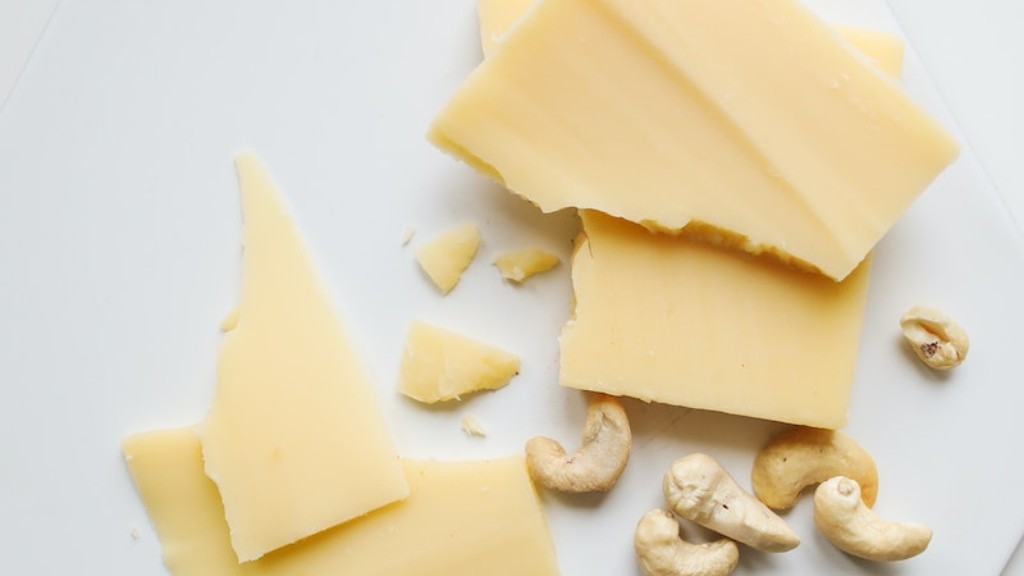Bacteria in Chedder Cheese
Cheese is most commonly associated with delicious flavor and the mild, creamy texture that most enthusiasts can’t get enough of. Ranging in complexity from sharp cheddars to delicate blue cheeses, individuals have a wide variety to choose from when incorporating cheese into their diets. But, even with all the deliciousness of cheese, there are risks associated with eating certain varieties; particularly moldy cheese.
Bacteria is the primary cause of producing the mold on many types of cheese, and it can be a risk to your health if you eat moldy cheese. It’s important to understand what causes mold and the potential risks associated with eating different types of cheeses that have visible mold on them.
Types of Bacteria in Chedder Cheese
The two main types of bacteria responsible for causing the appearance of mold on cheese are Staphylococcus and Streptococcus. Both bacteria are naturally-occurring organisms found on dairy products and other surfaces. While Staphylococcus is generally considered to be more dangerous and can cause food poisoning, both types of bacteria can be harmful if ingested.
The types of mold you may see on cheese vary depending on the type of cheese. Soft cheeses like camembert and brie are prone to growing mold on the surface, while hard cheeses like cheddar and parmesan are more likely to grow mold on the inside.
Health Risks Associated with Eating Moldy Cheddar Cheese
The primary risk associated with eating moldy cheese is the potential to contract a food-borne illness, or food poisoning. Symptoms of food poisoning can range from mild to severe and can include nausea, vomiting, diarrhea, and abdominal cramps. In some cases, it may even lead to hospitalization or death.
Furthermore, the specific type of bacteria found in the cheese can determine how severe the food poisoning is. Staphylococcus bacteria, for example, can cause a severe strain of food poisoning called Staphylococcal food poisoning. This strain can cause flu-like symptoms, such as fever, chills, and muscle aches, which typically take one to two days to appear after eating the contaminated food.
Resistant Strains of Bacteria
Some strains of both Staphylococcus and Streptococcus bacteria are resistant to heat and can survive cooking and pasteurization. This means that even if you cook the cheese, the bacteria can still be present and can cause illness. Therefore, it’s important to make sure that you don’t cook the cheese if it has visible mold on it.
Preventative Measures
It’s always best to avoid eating moldy cheese, as it can put you at risk for a food borne illness. To prevent mold on cheese, make sure to store all cheese in an airtight, freezer-safe container in the refrigerator. The cold temperature will help to slow the growth of the bacteria and can help to prevent the cheese from getting moldy.
Dangers of Inadequate Storage
In addition to preventing the growth of mold in cheese and other dairy products, proper storage can help to preserve the cheese’s flavor and texture. Make sure that you store all milk, cheese, and other dairy products in the refrigerator and be sure to check the expiration dates on each product before eating it.
How to Tell if Cheese is Safe to Eat
If you find mold on cheese, try to determine the type of mold and examine it closely. Soft cheeses like brie and camembert should be discarded if there is any mold, as these types of cheese are more likely to have dangerous bacteria present. Hard cheeses like cheddar can usually be salvaged if there is just a small amount of mold on the surface. Simply cut off the moldy parts and make sure to discard the outer layer of the cheese.
Alternative Options
If you’re still concerned about the safety of eating moldy cheese, there are many alternatives available. Artificial cheeses, vegan cheese, or a cheese-less dip can all be great options. These alternatives may not have the same flavor as real cheese, but they can be a great way to satisfy your craving for something cheesy without risking your health.
Health Benefits of Cheese
Despite the risks associated with eating moldy cheese, there are many health benefits associated with eating cheese in general. Cheese is rich in protein, calcium, and other important vitamins and minerals, making it an excellent source of nutrition. Eating cheese can also help to keep you full for longer. In addition, eating cheese may also help to reduce the risk of developing various chronic diseases.
Addressing Common Fears
Despite its considerable health benefits, many individuals tend to avoid cheese due to common fears and misconceptions associated with the product. A primary concern amongst many is the fat content, but cheese is actually low in fat and high in protein. Furthermore, cheese can be a great source of probiotics, which can help to promote good gut health.
Cheese Alternatives
Cheese is not the only way to get the health benefits associated with dairy products. Yogurt, cottage cheese, and milk are all excellent sources of protein, calcium, and other important vitamins and minerals. Furthermore, these products are usually much lower in fat than cheese and still provide a great source of nutrition.
Summary
The potential risks associated with eating moldy cheese should not stop you from adding cheese to your diet. Cheese can be a great source of nutrition and can help to keep you full for longer. Taking proper precautions when storing and checking the expiration date can help you avoid the risks associated with eating moldy cheese. If you are still concerned, there are many alternatives readily available, such as artificial cheeses or vegan cheeses, that can still provide the flavor and nutrition you desire.

